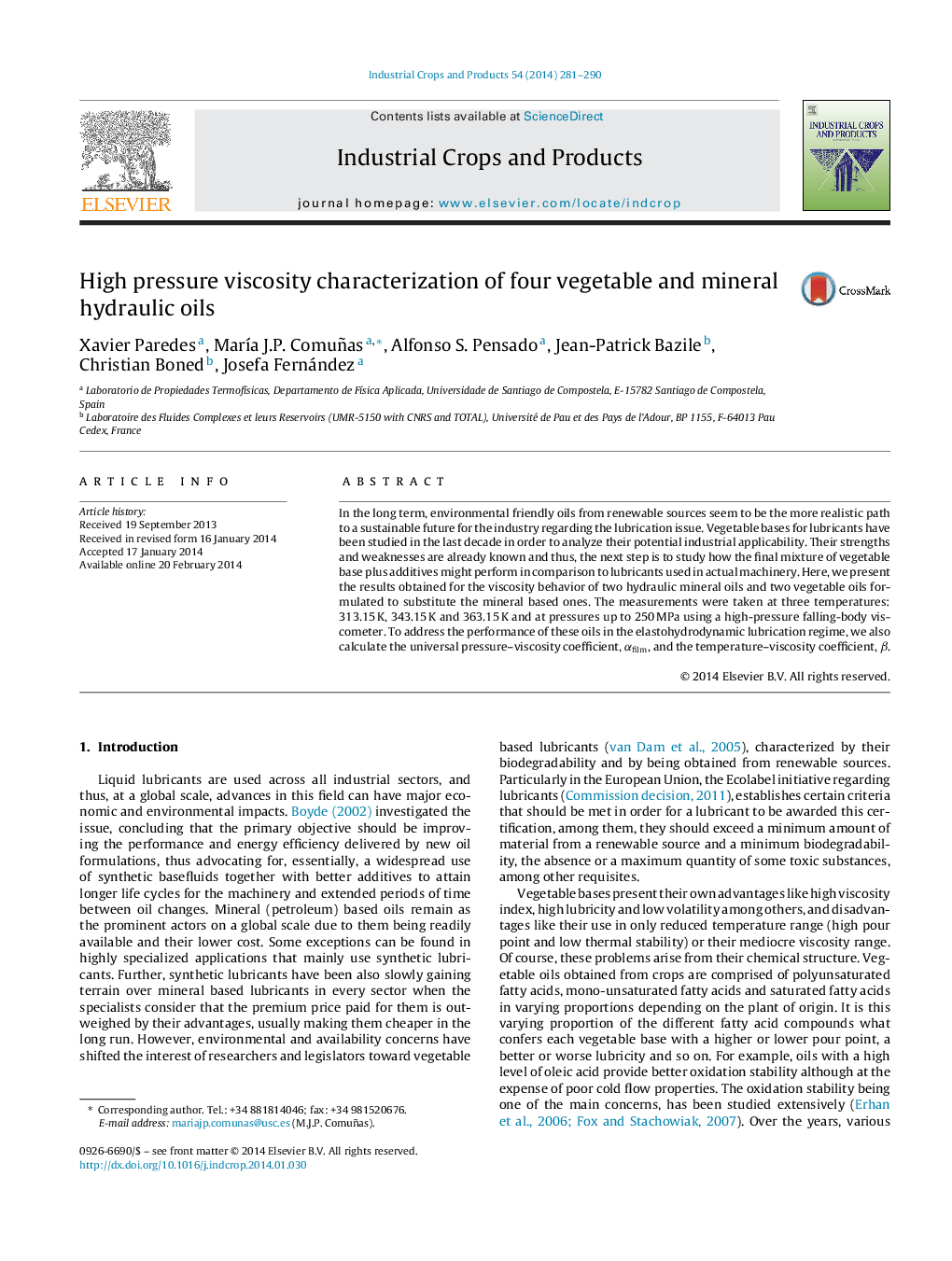| Article ID | Journal | Published Year | Pages | File Type |
|---|---|---|---|---|
| 4513349 | Industrial Crops and Products | 2014 | 10 Pages |
•Viscosity–pressure data are provided for two mineral and two developed vegetable oils.•These lubricants were fully formulated as hydraulic oils.•Film-forming capability in elastohydrodynamic lubrication is analyzed for the four oils.•Vegetable based oils provide a thinner protective layer than the mineral based oils.•The bio-oils offer better energy efficiency but metal/metal contact should be avoided.
In the long term, environmental friendly oils from renewable sources seem to be the more realistic path to a sustainable future for the industry regarding the lubrication issue. Vegetable bases for lubricants have been studied in the last decade in order to analyze their potential industrial applicability. Their strengths and weaknesses are already known and thus, the next step is to study how the final mixture of vegetable base plus additives might perform in comparison to lubricants used in actual machinery. Here, we present the results obtained for the viscosity behavior of two hydraulic mineral oils and two vegetable oils formulated to substitute the mineral based ones. The measurements were taken at three temperatures: 313.15 K, 343.15 K and 363.15 K and at pressures up to 250 MPa using a high-pressure falling-body viscometer. To address the performance of these oils in the elastohydrodynamic lubrication regime, we also calculate the universal pressure–viscosity coefficient, αfilm, and the temperature–viscosity coefficient, β.
